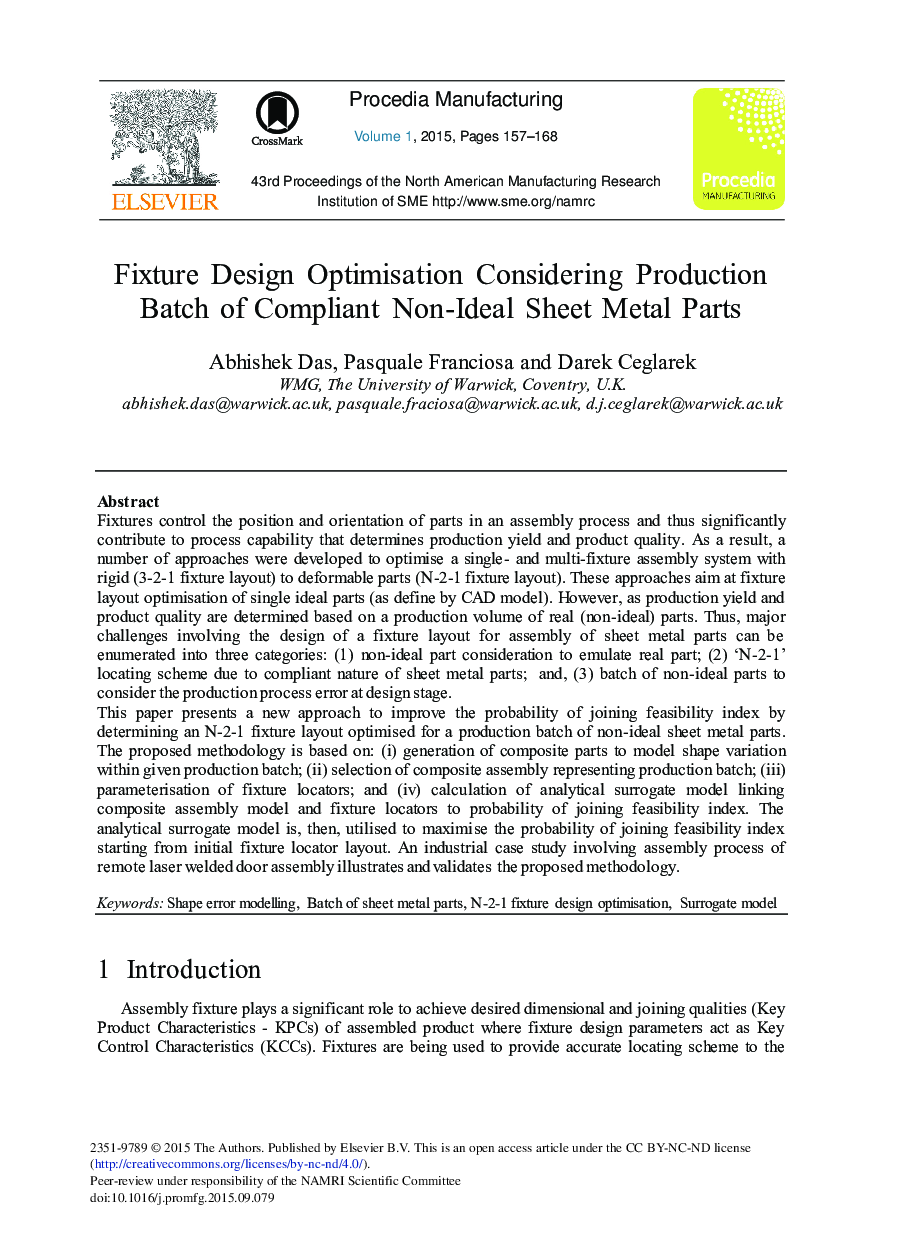| Article ID | Journal | Published Year | Pages | File Type |
|---|---|---|---|---|
| 1143689 | Procedia Manufacturing | 2015 | 12 Pages |
Fixtures control the position and orientation of parts in an assembly process and thus significantly contribute to process capability that determines production yield and product quality. As a result, a number of approaches were developed to optimise a single- and multi-fixture assembly system with rigid (3-2-1 fixture layout) to deformable parts (N-2-1 fixture layout). These approaches aim at fixture layout optimisation of single ideal parts (as define by CAD model). However, as production yield and product quality are determined based on a production volume of real (non-ideal) parts. Thus, major challenges involving the design of a fixture layout for assembly of sheet metal parts can be enumerated into three categories: (1) non-ideal part consideration to emulate real part; (2) ‘N-2-1’ locating scheme due to compliant nature of sheet metal parts; and, (3) batch of non-ideal parts to consider the production process error at design stage.This paper presents a new approach to improve the probability of joining feasibility index by determining an N-2-1 fixture layout optimised for a production batch of non-ideal sheet metal parts. The proposed methodology is based on: (i) generation of composite parts to model shape variation within given production batch; (ii) selection of composite assembly representing production batch; (iii) parameterisation of fixture locators; and (iv) calculation of analytical surrogate model linking composite assembly model and fixture locators to probability of joining feasibility index. The analytical surrogate model is, then, utilised to maximise the probability of joining feasibility index starting from initial fixture locator layout. An industrial case study involving assembly process of remote laser welded door assembly illustrates and validates the proposed methodology.
